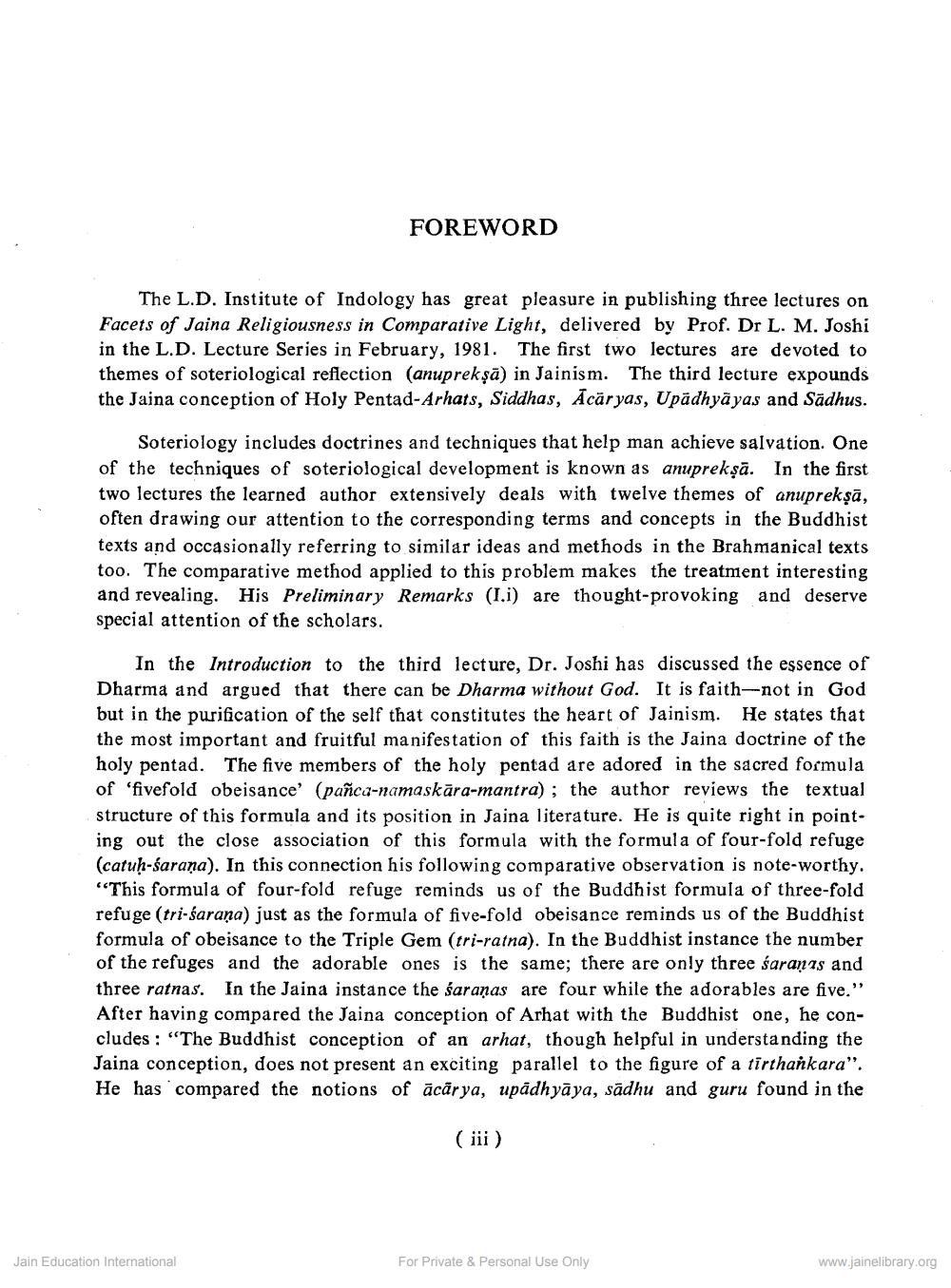________________
FOREWORD
The L.D. Institute of Indology has great pleasure in publishing three lectures on Facets of Jaina Religiousness in Comparative Light, delivered by Prof. Dr L. M. Joshi in the L.D. Lecture Series in February, 1981. The first two lectures are devoted to themes of soteriological reflection (anuprekşā) in Jainism. The third lecture expounds the Jaina conception of Holy Pentad-Arhats, Siddhas, Ācāryas, Upadhyāyas and Sädhus.
Soteriology includes doctrines and techniques that help man achieve salvation. One of the techniques of soteriological development is known as anuprekşā. In the first two lectures the learned author extensively deals with twelve themes of anupreksā, often drawing our attention to the corresponding terms and concepts in the Buddhist texts and occasionally referring to similar ideas and methods in the Brahmanical texts too. The comparative method applied to this problem makes the treatment interesting and revealing. His Preliminary Remarks (I.i) are thought-provoking and deserve special attention of the scholars.
In the Introduction to the third lecture, Dr. Joshi has discussed the essence of Dharma and argued that there can be Dharma without God. It is faith--not in God but in the purification of the self that constitutes the heart of Jainism. He states that the most important and fruitful manifestation of this faith is the Jaina doctrine of the holy pentad. The five members of the holy pentad are adored in the sacred formula of 'fivefold obeisance' (pañca-namaskāra-mantra); the author reviews the textual structure of this formula and its position in Jaina literature. He is quite right in pointing out the close association of this formula with the formula of four-fold refuge (catuh-saraña). In this connection his following comparative observation is note-worthy. "This formula of four-fold refuge reminds us of the Buddhist formula of three-fold refuge (tri-sarana) just as the formula of five-fold obeisance reminds us of the Buddhist formula of obeisance to the Triple Gem (tri-ratna). In the Buddhist instance the number of the refuges and the adorable ones is the same; there are only three śaranıs and three ratnas. In the Jaina instance the saranas are four while the adorables are five." After having compared the Jaina conception of Arhat with the Buddhist one, he concludes: "The Buddhist conception of an arhat, though helpful in understanding the Jaina conception, does not present an exciting parallel to the figure of a tirthankara". He has compared the notions of ācārya, upadhyāya, sādhu and guru found in the
(iii)
Jain Education International
For Private & Personal Use Only
www.jainelibrary.org




